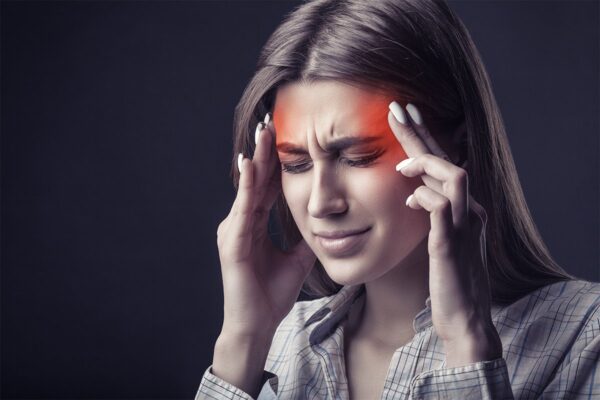Understanding Migraine Headaches: The Cause and Cure
38 million Americans suffer regularly from migraines, and of those 91% experience migraine-associated disability. Migraine headaches can vary widely from person to person. Classically, they are very strong and often come with nausea, vomiting and sensitivity to light and sound. They can last from several hours to several days.
Most sufferers experience stages listed as follows.
Prodrome: Hours or even days before the headache starts, many people describe symptoms like light sensitivity, fatigue, mood changes, food cravings or severe thirst. These vary widely but keeping a headache diary can help a migraineur identify these symptoms over time.
Aura: This is your nervous system going haywire. Often initial symptom is visual and start over a 5-20-minute period. Reported symptoms include seeing black dots, flashes of light, wavy lines or even hallucinations. Others report tunnel vision, tingling and/or numbness, ringing in ears and even stroke like symptoms such as difficulty speaking and symptoms that present on one side of the body. Some report changes in smell, taste or touch.
Attack: Onset is typically sudden and starts dull but quickly progresses to a sharper, throbbing pain. Typically, they are worse with physical activity and most sufferers report nausea and even vomiting. These can last from several hours to several days.
Postdrome: After an attack, you may feel tired or “washed up” for a day or so. Others, maybe because the pain is gone, will have an almost euphoric or elation feeling. This is also variable from person to person.
It’s important to have migraines monitored by a doctor because sudden changes can occur signaling a more severe condition. Headaches with fever, stiff neck, seizures, numbness or trouble speaking. If you’ve suffered these symptoms or a recent head injury, seek emergency medical attention immediately.

Chiropractor fort collins, Headache Treatment
Migraine Triggers
- Hormone changes in women
- Alcoholic drinks
- Highly caffeinated drinks, like coffee and soda
- Stress
- Light or sound stimulus
- Sleep disturbances
- Intense physical exertion
- Weather changes
- Responses to medications
- Foods, especially highly processed or sugary.
- Food additives like artificial sweeteners. Aspartame, often found in diet drinks and MSG are notorious culprits.
Migraine Treatments
Keeping a headache diary is critical in identifying triggers and different stages of headaches. Working closely with your physician can help greatly. Medication has become the first line treatment for many migraine suffers, with medication typically being take at the onset of a migraine attack. However, over 40% of migraine suffers reports that medications do not relieve their symptoms. Additionally, frequently taking medication for migraines can lead to medication overuse headaches, hypersensitivity, dependency.
Three systematic reviews have suggested that spinal manipulation may be an effective treatment for migraines. Spinal manipulation is most commonly practiced by doctors of chiropractic and some physical therapist and osteopathic physicians. 15% of the U.S. population reports seeking chiropractic treatment for migraine relief. The results of a meta-analysis published in 2019 found spinal manipulation to be effective in reducing both migraine pain intensity and frequency.[1]
If you suffer from migraines schedule your appointment today to see how chiropractic care can help you. Call 970-207-4463 or click here to request a free consultation and exam.
About the Author:
Occasionally we invite health care professionals as guest bloggers. Today’s blog was provided by Centennial chiropractor, Andrew Hicks D.C. Dr. Hicks specializes in pediatric care, personal injury, Chiropractic BioPhysics, scoliosis and personal injury. Visit https://www.highlandsfamilychiropractic.com/ or call 303-779-7933 to learn more.
- Rist, P.M., et al., The Impact of Spinal Manipulation on Migraine Pain and Disability: A Systematic Review and Meta-Analysis. Headache, 2019. 59(4): p. 532-542.
